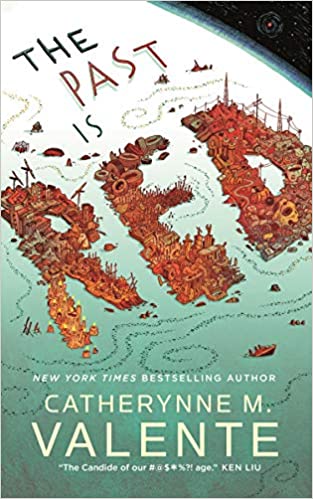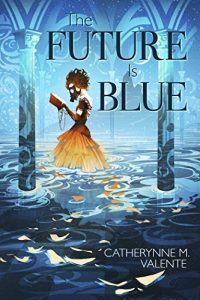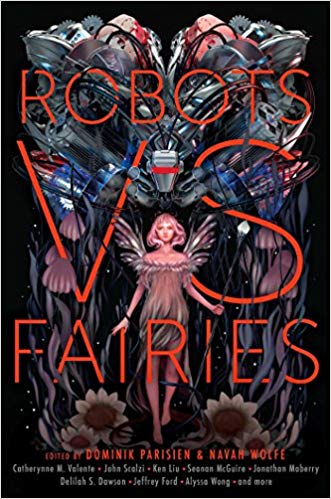 The Past Is Red by Catherynne M. Valente
The Past Is Red by Catherynne M. Valente Format: eARC
Source: supplied by publisher via Edelweiss
Formats available: hardcover, ebook, audiobook
Genres: dystopian, fantasy, post apocalyptic, science fiction
Pages: 160
Published by Tordotcom on July 20, 2021
Purchasing Info: Author's Website, Publisher's Website, Amazon, Barnes & Noble, Kobo, Bookshop.org
Goodreads
Catherynne M. Valente, the bestselling and award-winning creator of Space Opera and The Girl Who Circumnavigated Fairyland returns with The Past is Red, the enchanting, dark, funny, angry story of a girl who made two terrible mistakes: she told the truth and she dared to love the world.The future is blue. Endless blue...except for a few small places that float across the hot, drowned world left behind by long-gone fossil fuel-guzzlers. One of those patches is a magical place called Garbagetown.
Tetley Abednego is the most beloved girl in Garbagetown, but she's the only one who knows it. She's the only one who knows a lot of things: that Garbagetown is the most wonderful place in the world, that it's full of hope, that you can love someone and 66% hate them all at the same time.
But Earth is a terrible mess, hope is a fragile thing, and a lot of people are very angry with her. Then Tetley discovers a new friend, a terrible secret, and more to her world than she ever expected.
My Review:
If you threw Remote Control, Station Eleven, Wall-E, and the latest report from Climate Central about how sea levels will rise by 2050 to put major coastal cities around the world underwater (that last bit is completely real) into a blender and spread the resulting gumbo on top of the Great Pacific Garbage Patch (also real) as fertilizer, you’d get the makings of a myth.
The Past is Red is one plausible result of that mélange, a story about humanity’s survival in a post-apocalyptic world that makes Noah’s flood seem both true and tame.
It’s also possible to see this as a story about, as the saying goes, Mother Nature getting to bat last, while as she swings for the underwater fences her bat comes around and whacks one person in the head, over and over again.
Our perspective on this completely FUBAR’d world is Tetley Abednego, possibly the only truly happy resident of Garbagetown. She loves Garbagetown and believes it’s the best place that ever was or ever will be, which is why she’s the person Ma Nature, along with all of Tetley’s Garbagetown neighbors, is constantly whacking in the head with that bat.
They’re all allowed. It’s the law. Because Tetley destroyed their dreams with a bomb, instead of letting them all destroy themselves in an energy wasting but fruitless quest for dry land that no longer exists – except in Garbagetown.
This is the story of how things got that way. And what happened after.
Escape Rating B: One the one hand, this is a very small book. On the other, it’s filled with some very big ideas. It’s easy to read it as a kind of fable, about a crazy future where all that’s left is garbage and people manage to not just survive but actually thrive anyway.
And it’s the story of one young woman who appreciates what she has and sees her world for the treasure that it is, no matter how much most people punish her for her perspective. Because Tetley doesn’t envy the Fuckwits who had too much of everything and literally drowned their world because of it.
By the way, those Fuckwits are unquestionably us. The problem for Tetley is that most people DO envy us and wish that they could BE us and feel like they were cheated because they are not us.
One way of looking at this story is the adaptation – which is fascinating. Because the residents of Garbagetown are both living on and living off all the stuff that we, right now, are throwing away as garbage. And they’re doing surprisingly well.
Although they’ve made Oscar the Grouch, living in a garbage can, into a patron saint if not an outright deity. Which makes complete sense and is kind of mind-blowing at the same time.
After finishing, The Past is Red is a much harder story to wrap one’s head around than one might think. It lingers. Because it says things about our culture of consumption, and it says things about privilege, and what it says sticks in the mind because they are wrapped in what feels like a myth.
And I’m forcibly reminded of something from Sherri S. Tepper’s Beauty, the idea that, because of the mess that human beings have made/are making of the climate, the environment and even the planet, that in the environmental sense, the 1960s were the planet’s “last good time”. It feels like Tetley and Garbagetown are the inheritors of not changing course when we had the chance.
(Although the 1960s were far from universally good, and exactly which decade was the last chance to change course is open to plenty of debate, the concept has stuck in my head for decades and feels truer in principle every damn year.)
This has ended up being a mixed feelings kind of book. The language this myth is told in is beautiful and evocative. The wordsmithing of every single sentence is just lovely. Tetley’s own story is touching and heartbreaking, a story of someone who has so much hope and sees things so clearly but so much the opposite to those around her, and is punished for it.
 But the way the story is told is not linear. We see Tetley in her present, and then how she got that way, and then see her later in her life, and how she got there, with occasional daydreams of what should have been but wasn’t mixed in. It all added to the mythical feel of the story, but also made it lose a bit of clarity.
But the way the story is told is not linear. We see Tetley in her present, and then how she got that way, and then see her later in her life, and how she got there, with occasional daydreams of what should have been but wasn’t mixed in. It all added to the mythical feel of the story, but also made it lose a bit of clarity.
That this is actually two novellas, The Future is Blue and The Past is Red combined into a single volume adds a bit to that nonlinearity – which I didn’t know when I began. But you should so you don’t go hunting for The Future is Blue when you have it right here.
Because Tetley’s story, is definitely worth a read. As well as being just a bit of a mind game. Because it isn’t just the past that is red, in a head-spinning way, the future is, too.

 Robots vs. Fairies by
Robots vs. Fairies by